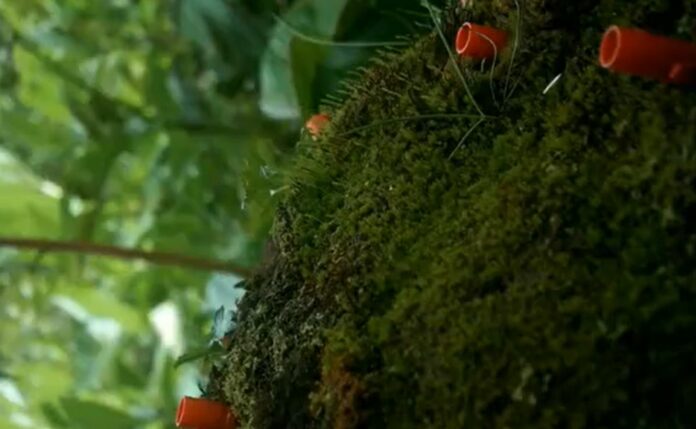You may be thinking you’re “on top of evolution. But the dinosaurs came and went, and so might humans, if we are not careful with our planet,” and Takakia Moss – World’s Oldest and Fastest-evolving Species – is just an example.
Rare, Resilient, and At Risk: Scientists’ Decade-Long Study Reveals Takakia Moss’s Struggle Against Climate Change in the Tibetan Plateau
A moss known as Takakia, which has been around for 390 million years, resides in some of the most isolated regions on Earth, including the icy crags of the Tibetan Plateau.
Over a ten-year research project, scientists scaled some of the highest peaks globally to locate Takakia, map its DNA for the first time, and examine the effects of climate change on this ancient moss.
Published in Cell today, their findings reveal that despite being one of the most rapidly evolving species ever studied, Takakia might not be adapting quickly enough to endure the challenges posed by climate change.
Takakia is a diminutive, slowly growing moss that is exclusively found in scattered patches on the Tibetan Plateau, as well as in Japan and the United States. The research team embarked on 18 demanding expeditions to reach the 4,000-meter-high dwelling place of the moss in the Himalayas, collect specimens, and investigate its environment.
According to Ralf Reski, an author of the study and a plant biotechnologist at the University of Freiburg, the team aimed to “describe and analyze a living fossil.”
Remarkably, Takakia was already ancient when the Himalayas were formed beneath it, drastically altering its habitat and demanding quick adaptation. The research showed that Takakia’s genome contains the highest number of rapidly evolving genes, actively adapting at the genetic level.
The plant’s extensive genome evolved over generations to mend broken DNA and heal UV damage, among other traits. They also discovered that despite extensive genetic changes, Takakia’s physical form has remained largely unchanged, providing insight into a new field of study that combines dynamic genomes with stable morphology.
“Takakia plants are covered with heavy snow for eight months each year, and then are subjected to high-intensity ultraviolet radiation during the 4-month light period,” remarks Yikun He, author and fellow plant biologist at Capital Normal University.
In response, the plants adapted the ability to grow in different locations using a flexible branching system.
“As a result, this continuous branching forms a network structure and a very sturdy population structure, which can effectively resist the invasion of heavy snowstorms.”
Sequencing the moss’s DNA settled a longstanding debate about its classification, confirming that Takakia is indeed a moss.
“People wondered, is it really a moss? Or is it something like an alga or a liverwort? Because it has a combination of ancient traits,” adds author Ralf Reski, a plant biotechnologist at the University of Freiburg in Germany, “but our work shows that it’s a moss.”
Further, the research team used various technological tools to examine Takakia’s surroundings, including satellite weather data and time-lapse cameras. They found alarming signs of climate change, such as the glaciers’ rapid melting and increasing UV radiation levels, that might pose fatal threats even to plants adapted for extreme conditions.
The researchers observed a steady decline in Takakia populations in Tibet, shrinking by approximately 1.6% annually.
“Our prediction shows that suitable conditions regions for Takakia will shrink to only around 1,000-1,500 square kilometers all over the world at the end of the 21st century,” warns Hu.
This raises concerns that the moss might not endure another century.
In an effort to safeguard the moss, the authors advocate public education about lesser-known species like Takakia and call for international collaboration to pool resources, study, and take protective measures.
“We need to not only focus on those charming animals such as the panda, polar bear, and the white dolphin, but also pay close attention to these rare and little species. They are more vulnerable under climate change, such as our moss Takakia,” adds Hu.
Efforts are underway to cultivate the moss in a lab and experiment with transplanting it to natural habitats in Tibet, offering hope for recovery or at least a delay in extinction.
The study emphasizes the urgent need for conservation efforts, focusing not just on charismatic animals but also on rare and small species, which are often more susceptible to climate change.
As Reski points out, “We humans like to think that we are on top of evolution. But the dinosaurs came and went, and so might humans, if we are not careful with our planet.
“Takakia may die because of climate change, but the other mosses will survive, even if we humans cannot. You can learn a lot from the simplest plants about the history of this planet, and maybe the future.”
Image Credit: Shutterstock
